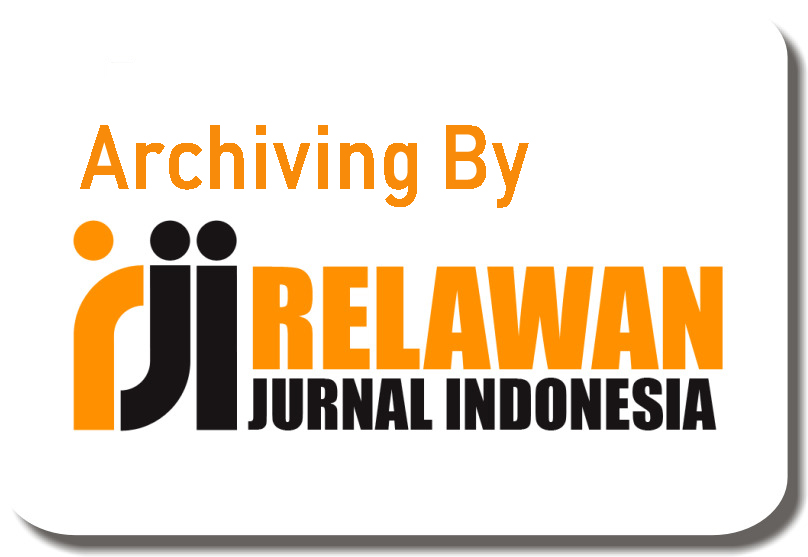Correlation between Critical Thinking Skills and Students' Learning Interests in the Development of Website-Based Learning Media Using the SQ3R Method
Abstract
The problem of low scores in Informatics subjects, student literacy, and critical thinking skills are the main background of this research. To answer these challenges, this study aims to develop website-based learning media using the SQ3R (Survey, Question, Read, Recite, Review) method in learning programming algorithms, and to measure the influence and correlation between students' learning interests and critical thinking skills. The subjects in this study were grade X students of the Software and Game Development Expertise Program (PPLG) at SMKN 1 Cisarua, with the object of research being students' critical thinking skills and learning interests. The research method used is Research and Development (R&D) with the ADDIE development model, which consists of five stages, namely Analysis, Design, Development, Implementation, and Evaluation. Learning media are designed to provide an interactive and enjoyable learning experience that supports the development of critical thinking skills and increases students' interest in learning programming algorithm material. The research instruments consisted of a learning interest questionnaire, a critical thinking test, and a validation sheet from material and media experts. The validation results showed that the developed media was feasible to use. Data analysis showed that there was a low positive correlation between students' learning interests and critical thinking skills, with a correlation coefficient value of 0.27. The conclusion of this study is that there is a relationship between students' learning interest and critical thinking skills, although the relationship is included in the low category. The developed learning media has the potential as an effective tool in improving the quality of the programming algorithm learning process.
Keywords
Full Text:
PDFReferences
Amanda, R.R., Syahidin, S., Nazhan, F.A., & Muzakki, R.F. (2024). Analysis of the Jurisprudence Learning Model with Debate Strategies in Building Students' Argumentative Skills. Journal of Educational Management, 8(2), 316-327.
Ausubel, D. P. (1968). Educational Psychology: A Cognitive View. New York: Holt, Rinehart and Winston.
Black, P., & Wiliam, D. (2009). Developing the theory of formative assessment. Educational Assessment, Evaluation and Accountability, 21(1), 5–31.
Branch, R. M. (2009). Instructional Design: The ADDIE Approach. New York: Springer.
Ennis, R. H. (2011). The Nature of Critical Thinking: An Outline of Critical Thinking Dispositions and Abilities. University of Illinois.
Facione, P.A. critical thinking: what it is and Why it Count. http://www.insightassessment.com/content/download/1176/7580/file/what/26why2010.pdf.2015.
Fadilasari, E., Pramudita, O., Aeni, K., & Azizah, W.A. (2024). Application of Project-Based Learning Model in Pancasila Education Subjects to Improve Learning Outcomes and Practice the Meaning of Pancasila Values. INNOVATIVE: Journal of Social Science Research, 4(1), 6887-6901.
Gall, M. D., Gall, J. P., & Borg, W. R. (2003). Educational Research: An Introduction (7th ed.). Boston: Allyn & Bacon.
Hake, R. R. (1998). Interactive-engagement vs traditional methods: A six-thousand-student survey of mechanics test data for introductory physics courses. American Journal of Physics, 66(1), 64–74.
Luthfia, Izza (2022). The Effectiveness of the Application of Interactive Media in Face-to-Face Learning is Limited to Student Learning Outcomes (Doctoral Dissertation, Dehasen University Bengkulu)
Maharani, S., Nusantara, T., As'ari, A.R., & Qohar, A. (2020). COMPUTATIONAL THINKING Problem Solving in the 2nd Century. CreateBook. Com
Paul, R., & Elder, L. (2014). The Miniature Guide to Critical Thinking Concepts and Tools. Foundation for Critical Thinking.
Purnamasari, I., Handayani, D., & Formen, A. (2020). Stimulation of hots skills in early childhood through steam learning. In the Proceedings of the National Postgraduate Seminar (Vol. 3, No. 1, pp. 506-516).
Robinson, F. P. (1946). Effective Study. New York: Harper & Brothers.
Safari. 2003. Learning Interest Indicators. Jakarta:Rineka Cipta
Sari, E.I., Nursanti, Ed.R., Fadholi, M., Aprinastuti, C., & Rismiyati, Y. (2023). The application of a computational approach to thinking about the foundational ability of energy materials and its changes in grade 3 of SD Negeri Bhaktikarya. Education: Journal of Research and Educational Articles, 15(1), 1-12.
Sugiono, Quantitative, Qualitative, and R&D Research Methods, 2010. Bandung: Alphabet.
Sugiyono. (2018). Educational Research Methods. Bandung: Alfabeta.
Suhendi, H.H., Utari, S., & Hasanah, L. (2018). Profile of critical thinking skills and improvement of learning achievement of high school students through the application of problem-solving strategies by reading infusions. Gravity: Scientific Journal of Physics Research and Learning, 4(1).
Syafrizal, T. (2023). Analysis of the Implementation of the Independent Curriculum in the Perspective of Humanistic Learning Theory in MTsN 3 and MTsN 19 Jakarta (S2 Thesis, Jakarta: FITK UIN Syarif Hidayatullah Jakarta).
Walid, MI (2017). Development of Geogebra-based interactive learning media with ADDIE development model (analysis, design, development, implementation, evaluation) in geometry materials for class XI MIA SMA Negeri 3 Takalar. Retrieved from the repository. uin-alauddin. ac. identifier.
Zimmerman, B. J. (2002). Becoming a self-regulated learner: An overview. Theory into Practice, 41(2), 64–70.
DOI: https://doi.org/10.31004/jele.v10i3.870
Refbacks
- There are currently no refbacks.
Copyright (c) 2025 Rangga Destian, Wahyudin, Rani Megasari

This work is licensed under a Creative Commons Attribution-ShareAlike 4.0 International License.



